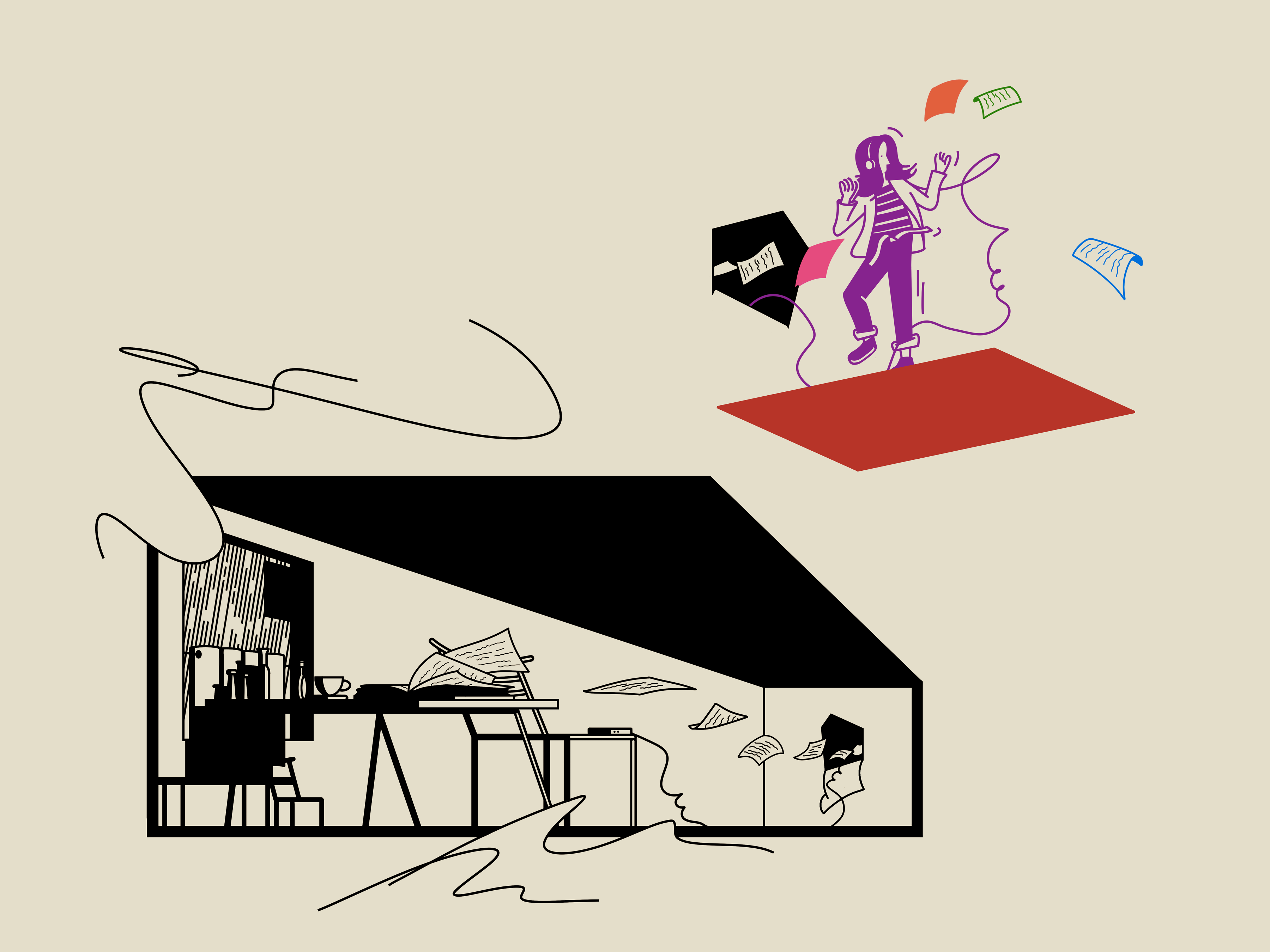Lily Bailey on mental health and Morten Harket
Lily Bailey, author of ‘Because We Are Bad: OCD and a Girl Lost in Thought’, talks anxiety and Eighties’ bands with Christine Manby


I used to think of myself like an iPhone that had been given the wrong settings,” says Lily Bailey, author and model, of her experience of obsessive compulsive disorder. Her memoir of growing up with OCD, Because We Are Bad: OCD and a Girl Lost in Thought, is an unflinching account that lays bare the reality of living with the condition that is still the punchline of too many jokes.
These days, Bailey uses her painfully gained knowledge to help others living with OCD and anxiety. She hosts a regular #OCDTalkHour on Twitter. In 2019, she was presented with an “Illumination Award” by the International OCD Foundation. And the soundtrack for her activism. Bailey announces her go-to feel-good culture fix somewhat shyly. “It’s the video to A-Ha’s ‘Take On Me’.”
“I grew up listening to eighties music thanks to my parents,” she explains. “I found ‘Take On Me’ while trawling through videos on YouTube as a teenager. The song gave me that swoopy stomach thing. I was instantly attracted to Morten Harket.”
‘I listen to Take On Me when I’m sad,’ Bailey says 'The synth sounds make me feel a way no other music does. But I also listen to the song when I’m feeling good. Then it affirms everything I’m feeling’
Bailey isn’t the first person to have felt that way. When Norwegian band A-Ha burst onto the music scene in the mid-1980s, lead singer Morten Harket became the subject of a million teenage crushes. Some of which have endured for a quarter of a century.
“The video was amazing. Whenever I’m feeling down I come back to it. I had no idea it had been such a big hit.”
Indeed “Take On Me” was A-Ha’s breakthrough song. It’s a cheery synth-pop confection of keyboards and guitars made sublime by Harket’s vocals, which cover more than two and a half octaves as they rise to an astonishing falsetto.
“Take On Me” hit number two in the UK and number one in the US but the journey to the top of the charts was not straightforward. Before Harket joined the band as lead singer, A-Ha was a duet known as Bridges, comprising Magne Furuholmen (Mags) and Pal Waaktaar. They’d written a fast tempo love song called Miss Eerie but set it aside because it didn’t match their otherwise gloomy Nordic image.
Despite his new bandmates’ ambivalence about the tune, when Harket first heard what he called the “Juicy Fruit Song” because of its poppy cheeriness, he had a feeling it could be a hit.
Morten Harket lowers his voice and says, ‘It’s no better to be safe than sorry’. When I’m singing along, I shout that line out loud. I don’t want to live my life being anxious. It’s a sort of anthem for anxious people
So the newly-formed A-Ha recorded the song multiple times and it was released on three occasions in three different versions. Even the version we now know and love, the one produced by Alan Tarney, failed to make the charts, with its boring video of the band performing in front of a plain blue background.
It took a ground-breaking new video by Irish director Steve Barron to make the difference. The video that entranced Lily Bailey opens with comic book-style scenes from a motorcycle race, with our hero Morten Harket taking the lead. Then it cuts to live action footage of a young woman in a dreary south London café, dreaming of romance as she reads about the race in her magazine.
Harket’s comic book character seems to wink at her from the winner’s podium and moments later, his drawn hand reaches out of the cartoon to pull her into it. Romance and mayhem ensue.
The young woman becomes a cartoon character and Harket becomes real as he sings to her through a looking-glass portal but it all goes horribly wrong when the defeated bike racers come after Harket with a pipe wrench, while “in real life”, the café owner crumples the young woman’s magazine and throws it in the bin, thinking she’s buggered off without paying.
16
weeks for the Take On Me video to be completed
Thankfully, Harket manages to tear a hole in the page in which he and his new girl are trapped, allowing her to escape and rematerialize in the café’s dustbin. Back at home, she smooths the mag out on her dressing table and sees her hero lying battered on the floor in the cartoon’s final frame.
But hooray! He’s not dead and after a bit of bashing against the cartoon’s borders, Harket rematerializes in the young woman’s hall. And happily ever after...
Though the storyline may be a little schlocky, the Take On Me video revolutionised the genre, marking the first time live action had been combined with animation in such a way, using a process called “rotoscoping”.
The whole thing took 16 weeks to complete. It was worth it. Barron’s video for Take On Me carried off six gongs at the 1986 MTV Video Awards. More than Michael Jackson’s Thriller. And as Bailey confirms, the video still seems remarkably fresh and sweet today.
“I listen to ‘Take On Me’ when I’m sad,” Bailey says. “The synth sounds make me feel a way no other music does. But I also listen to the song when I’m feeling good. Then it affirms everything I’m feeling. It’s cheesy and silly but it’s the best thing ever. When I’ve got friends over, I’m always tell them ‘You have to listen to this’.”
It is impossible to listen to ‘Take On Me’ without smiling and tapping your feet. Even former Labour leader Ed Miliband agrees. In a documentary about the making of the iconic song, he claims that whenever he hears it, “I’ll get on the dancefloor and that’s a pretty high bar for me.”
But it’s about more than the music. Bailey explains, “In the video, when Morten’s hand reaches out of the page to bring the girl inside, it’s the perfect depiction of falling in love with a book. Books were a refuge for me when I was at my lowest. When I disappear into the pages, I imagine that drawn hand reaching out. And there’s a line, just after the chorus, that really resonates.”
Bailey continues, “Morten Harket lowers his voice and says ‘It’s no better to be safe than sorry’. When I’m singing along, I shout that line out loud and as I do so I believe it. I don’t want to live my life being anxious. The girl in the video is taking a leap of faith and I want to do that too. It’s a sort of anthem for anxious people.”
In 2010, A-Ha played their farewell tour, entitled “Ending On a High Note” and Bailey went along to Wembley Stadium to see the band live for the first time. “I was close to tears,” she says. “I still have the ticket.” The good news is, perhaps it wasn’t farewell after all. Covid-permitting, A-Ha will be touring the UK again next year.



Join our commenting forum
Join thought-provoking conversations, follow other Independent readers and see their replies
34Comments